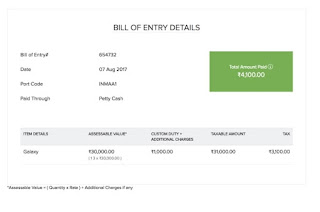Vehicle Number Tracker, Vehicle Details, Accounts Payable Automation, and E-Way Bill: How They All Connect
Vehicle number trackers, vehicle details, accounts payable automation, and e-way bills are all important tools for businesses of all sizes. By understanding how these tools work and how they connect, businesses can improve their efficiency and productivity. Vehicle number tracker can be used to track the location of vehicles in real time. This can be useful for a variety of purposes, such as: Tracking fleet vehicles: Vehicle number trackers can be used to track the location of fleet vehicles, such as delivery trucks and service vehicles. This can help businesses to ensure that their vehicles are where they are supposed to be and that they are being used efficiently. Tracking employee vehicles: Vehicle number trackers can also be used to track the location of employee vehicles. This can be useful for businesses that need to track the whereabouts of their employees for safety or security reasons. Tracking lost or stolen vehicles: Vehicle number trackers can also be used to track lost or...
